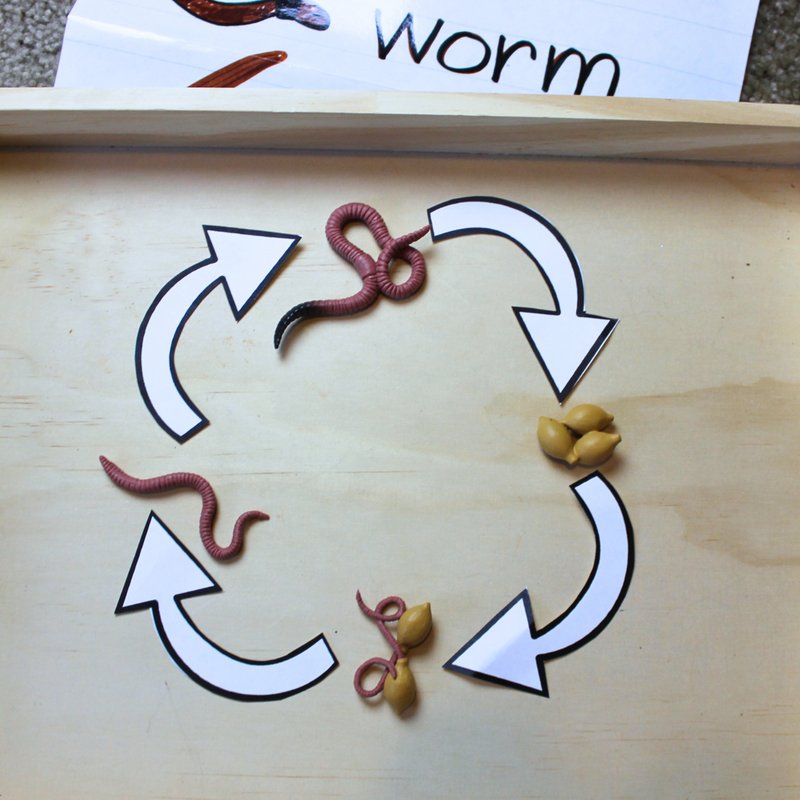
Documenting the life cycle of wolf worms for field studies isn’t just a dry academic exercise. It’s a fascinating journey through various stages, from egg to larva to adult. Think of it as piecing together a jigsaw puzzle. Each stage reveals something unique about their habits, habitats, and interactions with other species. With this information, researchers can understand environmental changes and the role of wolf worms within their ecosystems. Let’s dig deeper into how we can document this lifecycle effectively!
Understanding the Wolf Worm Life Cycle
To properly document the wolf worm life cycle, you first need to know what exactly a wolf worm is. Also known as larval nematodes, these tiny creatures often live in soil and feed on decaying matter. They undergo several stages in their lives, which can be briefly categorized into egg, larva, and adult stages.
The egg stage is where it all begins. Female worms lay eggs in moist environments, usually in the soil. It may take a few days to weeks for the eggs to hatch, depending on environmental factors like temperature and humidity. When the conditions are just right, tiny larvae emerge, ready to take on the world.
Next up is the larval stage. After emerging from the eggs, larval wolf worms can vary in appearance but are generally small and not immediately recognizable. They spend their time absorbing nutrients from their surroundings. This stage is crucial for growth and development, and it can last for several weeks or even months, depending on species and conditions.
Finally, we reach the adult stage. At this point, the wolf worms have transformed into their final form. They can reproduce and continue the cycle. Adult wolf worms often have a more robust structure—ready to fulfill their roles in the ecosystem, like breaking down organic matter and supporting soil health.
Setting Up Your Field Study
If you’re eager to document the wolf worm life cycle, great! A proper field study starts with careful planning. First, decide on a location that has a known wolf worm population. This could be a forest, a field, or even your backyard. Research the type of vegetation and soil composition in the area, as these factors can influence your findings.
Next, gather your equipment. A field notebook, camera, and sample containers will serve you well. You might also want a magnifying glass to get a closer look at the worms and their habitats. Taking photographs at various stages can be invaluable for your documentation, helping you create a visual timeline of their development.
Once you’re out in the field, pay attention to your surroundings. Soil composition, moisture levels, and temperature can greatly influence the wolf worm life cycle. Collect samples from different spots and observe how the conditions change. You’ll be surprised by how much you can learn just by keeping an eye on your environment!
Documenting Each Stage
Now that you’re ready to begin, it’s essential to document each stage of the wolf worm life cycle methodically. Start by recording the egg stage with details like location, date, and environmental conditions. Keeping track of these factors is critical because they can influence hatching times and larval survival.
During the larval stage, make sure to take notes on their behaviors and interactions with other organisms. Are they thriving in moist soil, or are they struggling in dry conditions? You might find them in decaying plant matter or areas rich in nutrients. Observing their natural behaviors will give you insights into their ecological role, which is invaluable for your study.
Finally, when you document the adult stage, look for signs of reproduction and the health of the worms. Are they mating? Are the adults consistently in the same area? Take notes on their physical characteristics—this can help you identify different species or understand variations within the same species.
Analyzing Your Findings
Once you’ve gathered enough data, it’s time to analyze your findings. Start by organizing your notes chronologically, focusing on how the wolf worms change from one stage to another. This will help you see patterns in their life cycle and may even reveal some surprising insights about their adaptation to environmental changes.
You might want to create a visual representation of your findings. A timeline or chart showing the progression from egg to adult can be an excellent way to convey your data. Consider creating side-by-side comparisons of conditions that led to successful or unsuccessful development.
Keep in mind that each location you study may yield different results. This can be due to varying soil types, moisture levels, and temperature. Analyzing your findings can provide a broader picture of how wolf worms adapt to their surroundings, which is essential for understanding ecosystem health.
Challenges You Might Face
Field studies can be unpredictable, and documenting the life cycle of wolf worms is no exception. You might encounter challenges like extreme weather, equipment failure, or simply not finding worm populations where you expected.
For instance, heavy rain can wash away eggs, impacting your observations. Here’s the thing: don’t get discouraged! Adaptability is key in any field study. If one method doesn’t yield results, don’t hesitate to try something new.
Equipment issues can also happen. If your camera battery dies or your field notebook gets soaked, have backup plans. Maybe keep an extra battery handy or use waterproof containers for notes. Keeping a flexible mindset will help you navigate these hurdles.
Why Studying Wolf Worms Matters
You might wonder why documenting the life cycle of wolf worms is important. These creatures play a vital role in nutrient cycling and soil health, impacting a much larger ecosystem. By understanding their life cycle, we can better track changes in the environment, which can help in conservation efforts.
Studying wolf worms can also reveal larger trends in biodiversity. For instance, if wolf worm populations are declining, it might indicate issues in their habitats that could affect other species. This makes your work not just about one creature, but about the health of the entire ecosystem.
Plus, every study contributes to a broader understanding of our natural world. Sharing your findings with fellow researchers can inspire new studies and lead to better conservation strategies.
In conclusion, documenting the wolf worm life cycle offers a window into the delicate balance of ecosystems. With curiosity and careful observation, you have the power to uncover hidden stories of nature. So, grab your notebook, head outside, and start your exploration—who knows what fascinating details you’ll uncover!

